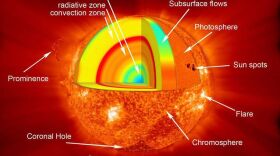We explore the quirky world of units—from the 1999 Mars Orbiter disaster caused by a metric vs. imperial mix-up to the colorful ways we measure everything from chili pepper heat to cotton and paper. You'll learn why U.S. territorial waters were once based on the range of a cannon shot, how Fahrenheit’s scale reflects geometric symmetry, and why a "barrel" of oil isn’t the same as a barrel of beer. With oddball units like skeins, quires, and cords still in use, maybe it’s finally time we all bolted over to metric!

Play Live Radio
Next Up:
0:00
0:00
Available On Air Stations






